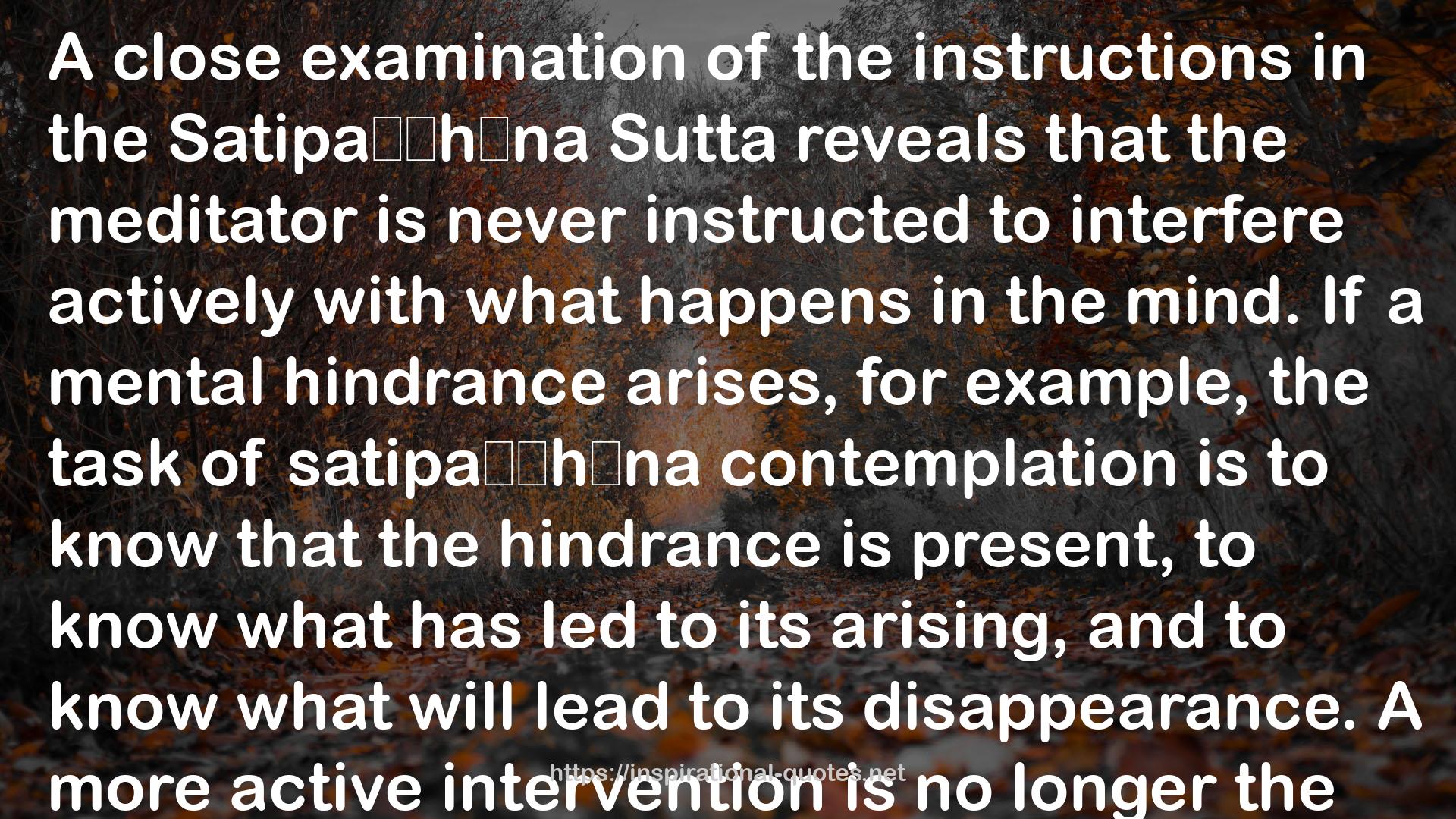" A close examination of the instructions in the Satipaṭṭhāna Sutta reveals that the meditator is never instructed to interfere actively with what happens in the mind. If a mental hindrance arises, for example, the task of satipaṭṭhāna contemplation is to know that the hindrance is present, to know what has led to its arising, and to know what will lead to its disappearance. A more active intervention is no longer the domain of satipaṭṭhāna, but belongs rather to the province of right effort (sammā vāyāma).
The need to distinguish clearly between a first stage of observation and a second stage of taking action is, according to the Buddha, an essential feature of his way of teaching. The simple reason for this approach is that only the preliminary step of calmly assessing a situation without immediately reacting enables one to undertake the appropriate action. "
― Bhikkhu Anālayo , Satipaṭṭhāna: The Direct Path to Realization
